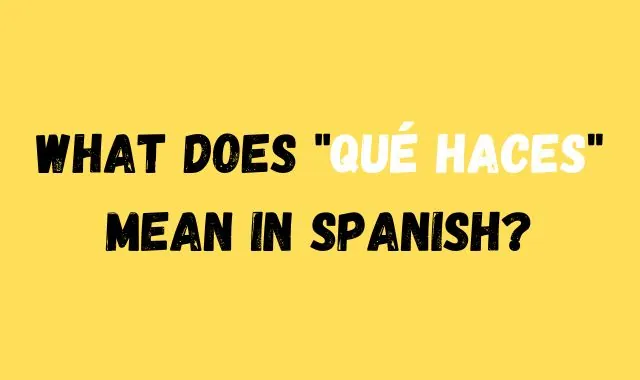Physical Address
304 North Cardinal St.
Dorchester Center, MA 02124
Physical Address
304 North Cardinal St.
Dorchester Center, MA 02124

“¿Qué haces?” is a common Spanish phrase that you’ll hear in everyday conversations. It’s a versatile phrase that can be used in different contexts, from casual greetings to expressing surprise. Let’s dive into what it means and how to use it effectively.
At its core, “¿Qué haces?” directly translates to “What are you doing?” in English. It’s a straightforward question that allows you to inquire about someone’s current activities.
While the literal translation is simple, the context can influence the meaning. Here are some common scenarios:
Informal vs. Formal Usage In informal settings, “¿Qué haces?” can be used as a casual greeting, similar to “What’s up?” or “How are you doing?” However, in more formal situations, it’s better to use phrases like “Cómo estás” (How are you?) or “Qué tal” (What’s up?).
Regional Variations While “¿Qué haces?” is widely used across Spanish-speaking countries, there might be slight regional variations in pronunciation or usage.
One of the most common uses of “¿Qué haces?” is as a casual greeting. It’s a friendly way to initiate a conversation and show interest in someone’s life.
If you want to know what someone is currently doing, “¿Qué haces?” is a perfect question to ask. It’s a simple and direct way to inquire about their activities.
You can also use “¿Qué haces?” to express surprise or disbelief. For example, if you see a friend in an unexpected place, you might say “Qué haces aquí?” (What are you doing here?).
There are a few other Spanish phrases that have similar meanings to “¿Qué haces?”:
While these phrases might have slight nuances, they can all be used to initiate a conversation or inquire about someone’s well-being.
Here are some examples of how to use “¿Qué haces?” in a sentence:
When using “¿Qué haces?,” it’s important to be mindful of cultural nuances and etiquette. In many Spanish-speaking cultures, it’s considered polite to respond to “¿Qué haces?” with more than just a simple answer. You might want to add a few details about your activities or ask the other person the same question.
The best way to master “¿Qué haces?” is through practice. Try using it in your conversations with native Spanish speakers or language exchange partners. You can also find language learning resources that offer practice exercises and drills.
“¿Qué haces?” is a versatile Spanish phrase that can be used in various contexts. By understanding its meaning and usage, you can improve your conversational skills and connect with Spanish-speaking people. Remember to practice using it in different scenarios to become more confident.